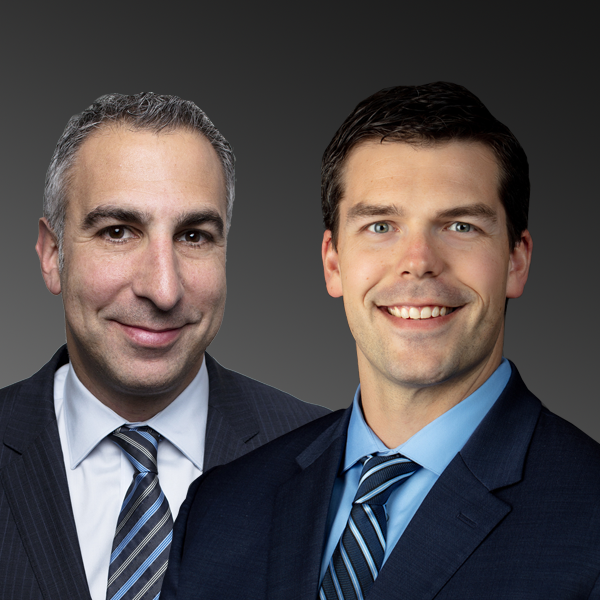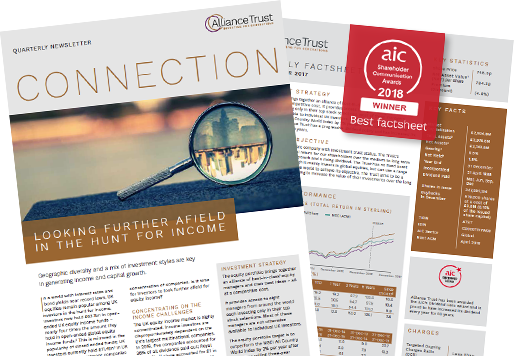AN ALLIANCE OF BEST IDEAS
Pioneering the next generation of multi-management
Alliance Trust’s new approach – an alliance of best ideas – neatly overcomes flaws in the traditional multi-manager model, namely closet tracking and high costs. The alliance of best ideas brings together eight best-in-class1 managers investing only in their best ideas. The result is a highly active portfolio made available at a competitive cost.
The approach has some similarities with traditional multi-manager funds – both benefit from a combination of different managers rather than a single manager. But, there are also key differences. Alliance Trust has a high-conviction portfolio – by which we mean every stock is one of our equity managers’ very best ideas, and the ongoing charges are targeted to be below 0.65% pa. By contrast, traditional multi-manager funds are often index-hugging portfolios containing a very large number of stocks at a high cost.
Our alliance of best ideas is far more likely to outperform than a traditional multi-manager portfolio. Here we explain why.
How active is ‘active’?
There is significant evidence2 showing that portfolios including stocks that are significantly different from their benchmarks, produce better results than portfolios that are similar to them. A recent piece of research, using a large industry database, showed that 72% of the funds that outperformed over a five-year period were run by highly active managers with portfolios that differed significantly from the benchmark3. (The difference is often measured through something called ‘active share’. These highly active portfolios had more than 80% active share. 100% active share would mean a portfolio that had no cross-over with the benchmark.)
Investors often criticise managers who claim to be active, and who charge the high fees that are often associated with active management, but turn out on closer inspection to be closet indexers. Their active share is often low (ie 60% or less)3. By contrast, Alliance Trust’s active share is 80% or more. See the factsheet for the most up-to-date figure.
Are more heads better than one?
The likelihood of outperformance can also be boosted by employing a number of highly active managers who are quite different in their individual approaches. Doing this helps control the overall portfolio’s risk. Willis Towers Watson’s analysis suggests the use of about eight, uncorrelated, skilled equity managers increases the chance of outperformance to more than 90%, compared with 70% for a single skilled manager4.
Any new solution must confront the flaws of traditional multi-manager models that undermine long-term value creation for investors:
- Over-diversification brings closet tracking
Many multi-manager equity portfolios are composed of managers’ ‘off-the-shelf’ products. These funds often include a number of ‘filler stocks’. These are less favoured stocks designed to help the portfolio mirror the benchmark, thus reducing short-term performance differences from it. This has the effect of reducing the potential for outperformance over the long term and results in over-diversification.
- High fees erode returns
Most multi-manager portfolios have high fees compared to other types of fund, given the cost of the additional layer of management. For instance, research conducted in 2016 highlighted that a typical ongoing charges figure for a multi-manager fund was 1.49% – significantly higher than 1.18% for multi-asset asset funds5. These higher fees undermine investors’ returns.
A new approach: An alliance of best ideas – best in class, high-conviction and low fees
Alliance Trust has been an investment innovator since its inception, and while appreciating all the benefits that combining different managers can bring, we recognised that traditional multi-manager models are not fit for our purpose. A new approach was needed; one that would improve not only expected returns but, importantly, the likelihood of delivering them. At the same time, it needed to ensure that returns were not being eroded by high fees.
The new approach is designed to:
- Increase the total return potential
Focused, high-conviction equity portfolios are more likely than large index-like portfolios to outperform after fees in the long run. All the managers included in the Alliance Trust portfolio run bespoke, high active share (80%+) strategies.
- Increase the likelihood of achieving those returns
Diversifying across a number of managers who have complementary approaches. The Alliance Trust portfolio is composed of eight different, highly skilled managers with few overlaps.
- Achieve this at a competitive cost
The ongoing charges ratio is targeted to be below 0.65%, making it one of the UK’s most competitively priced global equity investment trusts.

Alliance Trust’s innovative approach provides investors with access to eight best-in-class6 equity managers. The majority of these managers are not otherwise available to individual UK investors. Each manager is responsible for creating a global equity portfolio of about 20 stocks which are their ‘best ideas’. In addition there is an emerging markets portfolio with about 50 stocks. The combined portfolio, consisting of about 200 stocks, is managed by Willis Towers Watson, which is responsible for overall risk management. The number of stocks is roughly half the number in many multi-manager funds, reflecting our high-conviction approach.
Investors in Alliance Trust benefit from the best of both worlds: access to a diverse range of highly active, skilled managers; and high-conviction, active portfolios, without closet tracking or high investment costs. This is why we have confidence in our target for the equity portfolio to outperform the benchmark by a minimum of 2% every year over rolling three-year periods, after all costs. Success in meeting this target would make Alliance Trust one of the best-performing global equity investment trusts.
Find out more about Alliance Trust’s investment strategy and approach.
Sign up for the latest from Alliance Trust







